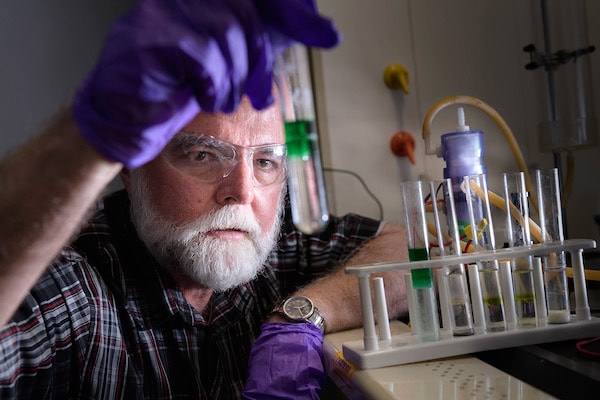
[Image above] John Cushman, creator of the instantly rechargeable battery. Credit: Purdue University
When you think of electric vehicles (EVs), Tesla is probably the first brand that immediately comes to mind. But electric vehicles have quite a long and fascinating history. It’s surprising to learn that automakers were experimenting with electric cars as early as the late 1800s.
When Henry Ford introduced his affordable mass-produced gas-powered car, electric cars all but disappeared by the 1930s. And it stayed that way until the energy crisis of the 1970s, which prompted a resurgence in the development of some of these funky little electric cars.
However, after the ’70s their popularity declined, and the ebb and flow of the electric car concept continued until the past decade—when vehicles like the Chevy Bolt, Tesla, and the Nissan Leaf appeared to be part of yet another comeback of electric vehicles.
Electric cars are a good idea—they offer many benefits over gas-powered vehicles, like lower fuel costs, lower emissions, and—in general—they’re just good for the environment.
But a couple of major obstacles the EV industry needs to overcome have to do with charging the vehicle. The amount of time it takes to completely charge an EV is typically longer than fueling up a gas-powered car at a filling station. If you’re not charging your EV overnight, how do you kill time while your EV is charging during the day?
The other problem is the short range of distance an EV can travel on a charge. Forget about those long-distance road trips, unless you’ve identified a charging station along your route in advance.
A promising breakthrough in battery research may be looming on the horizon, though. A Purdue University research team has been working on a process that would charge a battery in the same time it would take to fuel a car at a gas station.
Led by John Cushman, math professor and distinguished professor of earth, atmospheric and planetary science, the team created a way to refuel an EV or hybrid vehicle’s battery with fluid electrolytes to replace spent battery fluids. The spent fluids could be recycled for solar, wind, or hydroelectric energy use.
“Instead of refining petroleum, the refiners would reprocess spent electrolytes and instead of dispensing gas, the fueling stations would dispense a water and ethanol or methanol solution as fluid electrolytes to power vehicles,” Cushman said in the university’s news release. “Users would be able to drop off the spent electrolytes at gas stations, which would then be sent in bulk to solar farms, wind turbine installations or hydroelectric plants for reconstitution or re-charging into the viable electrolyte and reused many times.”
Cushman and business partner Eric Neuman, professor of mechanical engineering, basic medical sciences and biomedical engineering at Purdue, co-founded the start-up Ifbattery to continue research on the rechargeable battery, and eventually scale the technology.
Neuman believes that in order for EV manufacturers to achieve wider adoption of EVs, a massive and costly infrastructure of charging stations would need to be built to accommodate the increase in demand for EV owners in charging their vehicles. “Ifbattery is developing an energy storage system that would enable drivers to fill up their electric or hybrid vehicles with fluid electrolytes to re-energize spent battery fluids much like refueling their gas tanks,” he said in the news release.
The research team’s battery is called a flow battery—a battery that pumps a solution of charged metal ions dissolved in an electrolyte, through a cell which is separated by a membrane—and into another liquid, which generates an electric current. Replacing the electrolyte liquid recharges the battery instantly. Its unique distinction, however, is that the membrane—a separator that is prone to fouling—is removed.
“Membrane fouling can limit the number of recharge cycles and is a known contributor to many battery fires,” Cushman says. “Ifbattery’s components are safe enough to be stored in a family home, are stable enough to meet major production and distribution requirements and are cost effective.”
Recharging would work similar to fueling up at a gas station, and would take about the same amount of time, Neuman explains in the Ifbattery video. Gas stations could be retrofitted with chargers alongside the gas pumps on an ongoing basis as adoption of EVs gradually increases.
Ifbattery currently holds several patents and is looking for manufacturing partners to scale its technology.
“We believe we have a revolutionary concept in battery technology,” Cushman wrote in an email. “What you have seen in the video/press release is the tip of the iceberg.”
Watch the video below to learn more.
Author
Faye Oney
CTT Categories
- Basic Science
- Electronics
- Energy
- Material Innovations


